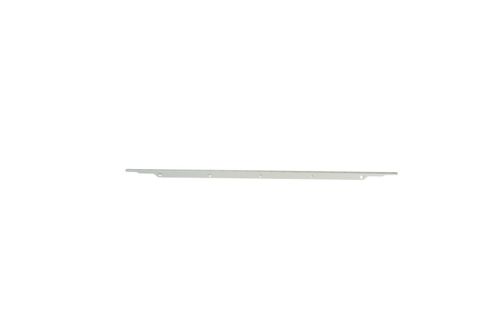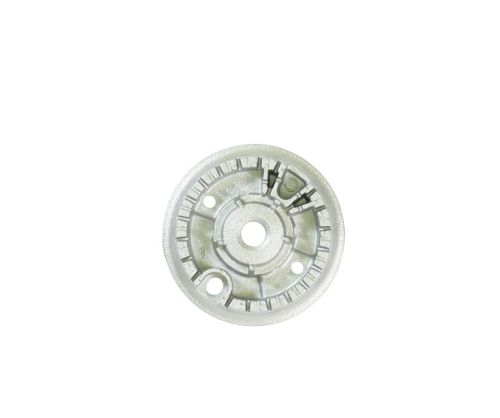
Bosch Refrigerator Thermostat Issues: Causes and Quick Fixes
Bosch refrigerators are celebrated for their seamless blend of innovative design and reliable performance, making them a centerpiece in modern kitchens. Central to maintaining this high standard is the thermostat, a critical component responsible for regulating the cooling process. When a Bosch thermostat malfunctions, it can trigger a range of issues, from inconsistent temperatures and food spoilage to a complete failure of the cooling system. This article serves as an in-depth guide, offering insights into understanding, diagnosing, and resolving common thermostat problems in Bosch refrigerators.
What Does a Refrigerator Thermostat Do?
Consider the thermostat as the conductor of your refrigerator's cooling symphony, orchestrating the precise maintenance of the ideal temperature required to keep your food fresh and safe. The thermostat's primary function is to monitor the internal temperature of the refrigerator. This on-and-off cycle is crucial for maintaining a consistent temperature range, typically between 34°F and 38°F in the refrigerator compartment.
Thermostats come in two main types:
-
Manual thermostats typically feature a dial that allows users to set the desired temperature level. These are often found in older or more basic refrigerators.
-
Bosch smart thermostat models offer a more advanced approach, providing precise, often digital, temperature control and automated adjustments based on various factors, such as ambient room temperature and usage patterns.
A faulty thermostat can disrupt this delicate balance, leading to a cascade of problems. Temperature fluctuations become common, causing food to spoil faster than expected. The refrigerator may run constantly, leading to increased energy consumption and higher electricity bills.
Common Signs of Bosch Refrigerator Thermostat Issues
Before diving into replacement or repair, it's crucial to understand the signs that may point to a failing thermostat. Detecting these issues early can prevent food spoilage, excessive energy usage, and further damage to the appliance.
|
Symptom |
Description |
|
Inconsistent cooling |
|
|
Refrigerator not turning on or off |
|
|
Frozen food in the fresh food compartment |
|
|
Unusual noises |
|
|
Ice buildup |
|
Major Causes of Thermostat Problems
Thermostat problems can stem from a variety of underlying causes. Understanding these causes can help you prevent issues and take appropriate action when they arise:
-
Dirt or debris buildup: Dust, food particles, and other debris can accumulate around the thermostat. This buildup can insulate the thermostat, preventing it from accurately sensing the refrigerator’s internal temperature.
-
Electrical connection failure: The thermostat relies on stable electrical connections to communicate with the refrigerator's other components. Over time, these connections can corrode, loosen, or otherwise fail.
-
Thermostat wear and tear: Like any mechanical component, thermostats are subject to wear and tear over time. The internal components can degrade, leading to inaccurate temperature readings and eventual failure.
-
Power surge or user mishandling: Electrical surges, whether from lightning strikes or grid fluctuations, can damage the sensitive components within the thermostat.
-
Incompatible replacement: When a thermostat fails and needs replacement, using non-genuine Bosch Replacement Parts can introduce a host of problems. Generic or incompatible thermostats may not accurately sense temperature, may not fit properly, or may lack the quality and durability of genuine Bosch parts.
Bosch Thermostat Troubleshooting Guide
Before you decide to change the refrigerator thermostat, it's prudent to undertake some basic troubleshooting steps. These can help you pinpoint the exact cause of the problem and determine the most appropriate course of action:
-
Safety first: Before undertaking any repairs or inspections, always disconnect the refrigerator from its power source. This prevents any risk of electrical shock.
-
Access the thermostat: In most Bosch refrigerator models, the thermostat is located behind the temperature control dial panel. Gently pry off the panel to access the thermostat.
-
Visual inspection: Once you have access to the thermostat, visually inspect it for any signs of damage. Look for broken wires, burnt components, or other visible issues.
-
Test with a multimeter: A multimeter is an invaluable tool for testing the functionality of a thermostat. Set the multimeter to the Rx1 setting (resistance) and touch the probes to the thermostat's terminals. A reading of zero ohms (or very close to zero) indicates that the thermostat is functioning correctly and allowing current to flow.
-
Check for ice buildup: As mentioned earlier, ice buildup around the thermostat can interfere with its ability to accurately sense temperature. Check for any ice accumulation and carefully remove it.
-
Verify the settings: Make sure that the thermostat is set to the correct temperature range. As a reminder, the ideal temperature for a refrigerator is between 34°F and 38°F, and 0°F or below for the freezer. Adjust the settings as needed.
-
When to reset vs. replace: If the thermostat fails the multimeter test, shows signs of physical damage, or continues to malfunction after cleaning and resetting, replacement is likely necessary.
Remember, when troubleshooting, always prioritize the use of the best Bosch thermostat components and authentic Bosch appliance parts to ensure reliability and compatibility.
How to Change Thermostat in Refrigerator (DIY Steps)
If your Bosch Thermostat Troubleshooting efforts point to the need for a replacement, you can undertake the Bosch Thermostat Installation yourself.
-
Access the thermostat: Remove the temperature control dial panel to expose the thermostat. Refer to your refrigerator’s service manual for specific instructions.
-
Disconnect wires: Carefully disconnect the wires attached to the old thermostat. Before disconnecting, take detailed notes or pictures of the wiring configuration.
-
Remove the old thermostat: Depending on the model, the thermostat may be screwed or clipped into place. Unscrew or unclip the thermostat from its housing.
-
Install the new thermostat: Place the new thermostat into the housing and secure it in place.
-
Reconnect wires: Reconnect the wires to the new thermostat, carefully matching the wiring configuration you documented earlier. Ensure that the connections are secure and that no bare wire is exposed. Use electrical tape to insulate any exposed wire.
-
Reassemble: Replace the temperature control dial panel.
-
Test: Plug in the refrigerator and monitor its performance for the next 24 hours. Make sure that the refrigerator is cooling properly and that the temperature is stable.
When to Upgrade to a Bosch Smart Thermostat
Considering an upgrade to a Bosch smart thermostat can offer numerous advantages over traditional manual thermostats:
-
Enhanced energy efficiency: Bosch smart thermostat models employ advanced algorithms and smart technology to optimize the cooling cycle. They learn your usage patterns, monitor ambient conditions, and make real-time adjustments to minimize energy consumption.
-
Precise temperature control: Smart thermostats offer unparalleled precision in temperature control. You can set the desired temperature to a specific degree, ensuring that your food is stored at the optimal temperature for freshness.
-
Remote monitoring and control: Many Bosch smart thermostat models come with smartphone apps that allow you to monitor and control the refrigerator’s temperature remotely.
-
Long-term reliability: High-quality smart thermostats are designed for long-term reliability. Their advanced sensors and automated adjustment capabilities can extend the lifespan of your refrigerator by preventing unnecessary wear and tear.
-
Integration with smart home systems: Some Bosch smart thermostat models can integrate seamlessly with other smart home systems, such as Amazon Alexa or Google Assistant.
Explore the range of the best Bosch thermostat options available at HnK Parts to find a smart thermostat that aligns with your specific needs and budget.
9 Refrigerator Problems & Proven Fixes You Need to Know
Addressing thermostat issues promptly is essential for maintaining the efficiency, performance, and longevity of your Bosch refrigerator. From dealing with inconsistent cooling and unusual noises to facing complete cooling failure, understanding the underlying causes and implementing timely fixes can save you both time and money. When replacements become necessary, always insist on using genuine refrigerator appliance parts. Genuine Bosch parts are specifically designed and engineered for your refrigerator model, ensuring compatibility, optimal performance, and lasting durability.
FAQs
Why is my Bosch thermostat not working?
A Bosch thermostat may not work due to power issues, faulty wiring, sensor malfunction, or software glitches. Check the power source and reset the Bosch thermostat.
What happens if the fridge thermostat is not working?
If the fridge thermostat is not working, it can cause the refrigerator to run constantly or not cool at all, leading to food spoilage and inconsistent temperatures.











